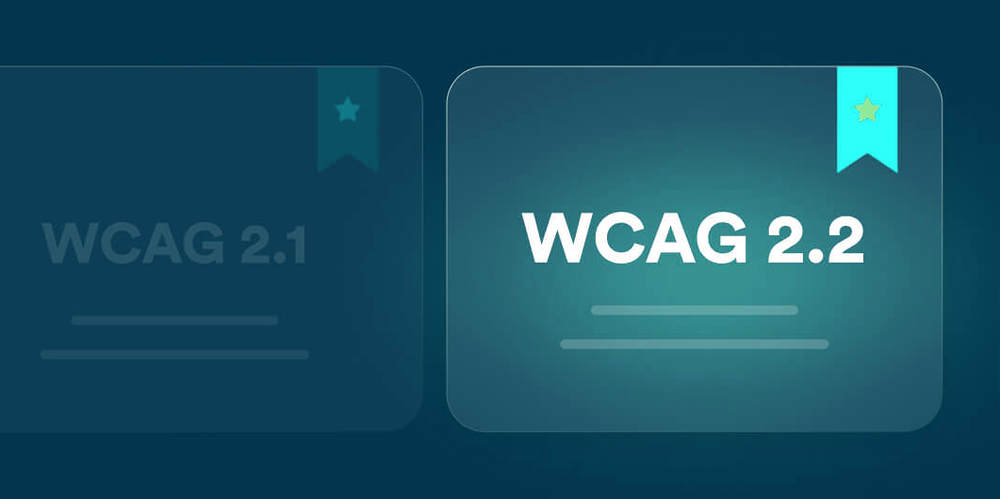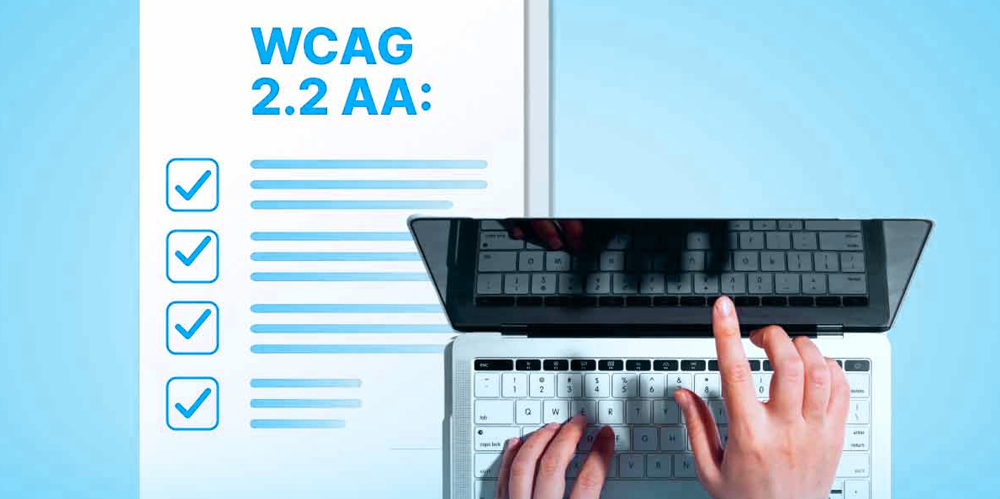What is WCAG?
The Web Content Accessibility Guidelines (WCAG) are globally recognized standards created by the World Wide Web Consortium (W3C) to ensure websites, applications, and digital platforms are accessible to people with disabilities. These guidelines are the foundation for most international accessibility laws and policies.
According to the World Health Organization (WHO), over 1.3 billion people worldwide live with some form of disability that’s nearly 16% of the global population. Ensuring accessibility is no longer optional; it’s a business, ethical, and legal necessity.
By following WCAG standards, organizations can:
- Expand digital reach to a wider audience.
- Improve compliance with global accessibility laws.
- Enhance SEO and usability for all users.
- Protect against legal risks and lawsuits.


Why WCAG Matters?
Accessibility lawsuits are on the rise:
- In the U.S., more than 4,600 digital accessibility lawsuits were filed in 2022–23 under the Americans with Disabilities Act (ADA).
- The European Accessibility Act (EAA) is set to make WCAG-based accessibility mandatory across the EU by June 2025.
- Countries like Canada (AODA), Australia (DDA), and India (RPwD Act, 2016) already enforce WCAG compliance as part of digital inclusion.
For businesses, non-compliance means not just fines, it risks losing customers, damaging brand reputation, and missing out on a large market segment.
The 4 Principles of WCAG
The 4 Principles of WCAG

Perceivable
- Content must be presented in ways that users can recognize and process.
- Includes text alternatives for images, captions for videos, and adaptable layouts for assistive technologies.

Operable
- Users must be able to navigate and interact with the content efficiently.
- Ensures keyboard accessibility, clear navigation, and user-friendly interactive elements.

Understandable
- Information and user interfaces must be clear and easy to use.
- Provides readable text, intuitive design, and error prevention/correction mechanisms.

Robust
- Content should be compatible with a wide range of devices and assistive technologies.
- Uses well-structured HTML, CSS, and ARIA attributes for consistent interpretation across platforms.
WCAG Levels of Conformance
WCAG Levels of Conformance
-
Level A (Minimum):
- Ensures basic accessibility but leaves gaps.
- Example: Providing alt text for images.
-
Level AA (Industry Standard):
- Balances accessibility and practicality.
- Covers contrast ratios, keyboard navigation, resizable text.
- Required by most legal regulations worldwide.
-
Level AAA (Optimal):
- The highest standard.
- Example: Sign language interpretation for videos.
- Not always achievable across all types of content.
According to WebAIM’s 2023 study, only 4% of websites fully meet WCAG Level AA compliance, showing a major accessibility gap.
WCAG Versions at a Glance
WCAG Versions at a Glance
-
WCAG 2.0 (2008):
The foundation of modern accessibility guidelines, WCAG 2.0 introduced the four core principles: Perceivable, Operable, Understandable, and Robust (POUR). It set success criteria to ensure that digital content could be accessed by users with different disabilities.
-
WCAG 2.1 (2018):
Recognizing the rapid rise of mobile technology, WCAG 2.1 expanded on 2.0 by adding 17 new success criteria. These primarily addressed accessibility for mobile devices, users with low vision, and individuals with cognitive and learning disabilities.
-
WCAG 2.2 (2023):
The most recent update, WCAG 2.2, builds on 2.1 with additional success criteria that improve usability and inclusivity. It focuses on simplifying navigation, enhancing input methods, and supporting users with cognitive or fine motor challenges.
WCAG 2.0 vs 2.1 vs 2.2: Quick Comparison
WCAG 2.0 vs 2.1 vs 2.2: Quick Comparison
WCAG 3.0: The Future of Accessibility
WCAG 3.0 (currently in draft) will replace the A/AA/AAA model with a more flexible scoring system (Bronze, Silver, Gold).
Key changes expected:
- Broader coverage (beyond websites → apps, IoT, VR, AR, AI-driven tech).
- Stronger emphasis on user outcomes, not just technical criteria.
- Usability testing integrated with guidelines.
- Rolling updates instead of waiting years for new versions.
Note: WCAG 3.0 is still a draft, but early adoption is recommended to stay ahead.
Why is WCAG Compliance Essential?
Why is WCAG Compliance Essential?

Legal Compliance

Enhanced User Experience

SEO & Market Reach

Future-Proof Accessibility
Partner with Experts for WCAG Compliance
At Accessible Minds, we specialize in WCAG audits, accessibility remediation, and compliance consulting to help organizations achieve full digital accessibility. Let’s build an inclusive digital future together.
Contact Us Today to Get Started!

FAQs on WCAG
FAQs on WCAG
-
WCAG itself isn’t a law, but most accessibility laws worldwide (like ADA, AODA, EAA) are based on WCAG standards.
-
Not necessarily. Most organizations aim for Level AA, which balances accessibility and practicality while meeting legal requirements.
-
Major updates are released every few years; the latest is WCAG 2.2 (2023), with WCAG 3.0 currently in draft.
-
It applies to all, but is mandatory in government, education, healthcare, banking, and e-commerce sectors.
